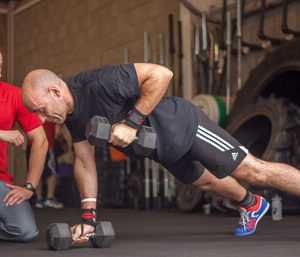Walking or Running – Which is better for Health Benefits?
When Starting a Fitness Program Should You Be Walking or Running?
Starting a fitness program can be as easy as stepping out of your door and placing one foot in front of the other. However, that is where the questions start regarding what is the best exercise for health benefits. Is it better to go walking or running? I am of course being a little facetious in this statement. Nothing is ever that black or white, and that includes deciding if running or walking is going to be more or less appropriate for your current situation and goals!
Whether you want to go walking or running, both are an excellent way to increase your heart rate, burn calories and reduce health risks.
Walking or Running Has Similar Benefits
According to the American Heart Association, researchers analyzed 33,060 runners in the National Runners’ Health Study and 15,045 walkers in the National Walkers’ Health Study. They found that the same energy used for moderate- intensity walking and vigorous intensity running resulted in similar reductions in risk for high blood pressure, high cholesterol, diabetes, and possibly coronary heart disease over the study’s six years of analysis.
So, Then What is the Difference? Should You Start Walking or Running?
First and foremost, I would like to start off with the thought that there is no bad exercise! Exercise is just more appropriate or less appropriate, higher or lower risk, depending on your age, physical limitations and fitness level. Should a person that has just had a grave illness regarding a cardiovascular occurrence go for a full-out run? Well of course not! Should someone that is an Olympic caliber runner start doing nothing but go for walks for health benefits? Again of course not! They are at opposite ends of the spectrum and as such need a prescription for much different exercise programs.
Other factors in the equation include, but aren’t limited to, these next questions. What are your goals right now? What is your current workout plan and how long have you been working out? How old are you? What bad habits do you have now (i.e. smoking, over-eating etc.)? Do you have injuries or extenuating health conditions that affect your ability to run (i.e. Arthritis in your hips, knees or ankles, previous concussions etc.)? These questions and much more will all play crucial roles in your decision.
How Much Time Do You Have to Devote to an Exercise Plan?
What difference does that make? A lot more than you may think. Consider there are four main training zones.
- Zone 1 Health Benefits – Rating of Perceived Exertion 2 – 3/10 or 50%-60% of your HRR.
- Zone 2 Fat Simmering – Rating of Perceived Exertion 3 – 5/10 or 60%-70% of your HRR.
- Zone 3 Moderate High Intensity – Rating of Perceived Exertion 5 – 7/10 or 70%-80%.
- Zone 4 – High Intensity – Rating of Perceived Exertion 7 – 9 /10 or 80%-90%+.
These zones also have a time attached to them that you are required to do to get the full benefit. Zone 1 requires that you spend 1 to 2 hours hanging out in that heart rate zone to get any real benefit. On the other end of the spectrum; zone 4 only requires you to spend 20 to a maximum of 40 minutes to achieve full benefits.
What does that look like for your life? You’ll have to spend significantly more time walking than you would if you were running to get the same health benefits and to cover the same distance. During a 15-minute jog, you would burn about the same number of calories as a brisk half-hour walk.
How Many Calories Can you Walking or Running?
How many calories do you burn when considering if you should do a running program or a walking program?
| Walking or Running Program on a Flat Surface for a Female | 30 Years old | 5’6” | 150 lbs |
| Running for 30 minutes at 5 miles per hour | Average burn – 288 calories |
| Running for 30 minutes at 6 miles per hour | Average burn – 342 calories |
| Running for 30 minutes at 7 miles per hour | Average burn – 391 calories |
| Walking for 30 minutes at 2 miles per hour | Average burn – 95 calories |
| Walking for 30 minutes at 3 miles per hour | Average burn – 148 calories |
| Walking for 30 minutes at 4 miles per hour | Average burn – 176 calories |
| Hiking for 30 minutes (Uphill) | Average burn – 202 calories |
Increased Risk of Injury
Trying to do too much, walking or running, too soon can lead to injury; running puts more stress on the body, particularly on the joints. The chance of getting injured is likely without proper training. Running without muscle balance surrounding the joints can lead to shin splints, Achilles tendon tears, plantar fasciitis, IT Band syndrome and patella femoral syndrome to name just a few.
Check with Healthcare Professionals to Make Sure You are Safe to Run
Running is an awesome way to get into shape. Make sure you check with your healthcare professional to ensure you are safe to run. When you decide to crank it up, first check with your family physician, especially if you have any pre-existing conditions such as arthritis, diabetes, high blood pressure, cardiovascular disease or any other health conditions.
Mix Up Your Training Routine
Keep in mind that it doesn’t have to be one or the other. It is a good idea to change up your training zones and mode of exercise during the week to reduce the risk of over training. Switching up your training consistently throughout the week also reduces boredom and can keep you on task and enjoying your exercise plan.
Adding in some sprints to your week leads to massive calorie burning capabilities and provides you with EPOC (Excess post-exercise oxygen consumption). EPOC is a measurably increased rate of oxygen intake following strenuous activity. This “after burn” effect of high-intensity exercise leaves you burning extra calories for hours after you finish your workout.
Hire a Fitness Professional to Make a Plan
Are you new to walking or running? Personal trainers will assess your current fitness level and develop a custom workout routine that delivers a highly effective and efficient process of building muscle and burning fat while improving your cardiovascular health. Make sure you play safe!
Happy Training!
Cathie Glennon – BCRPA/SFL
References:
- https://greatist.com/fitness/walking-good-workout-running
- https://www.webmd.com/fitness-exercise/news/20170504/walking-vs-running—-which-is-better
- https://danettemay.com/walking-vs-running/
- https://www.heart.org/HEARTORG/HealthyLiving/PhysicalActivity/Walking/Walk-Dont-Run-Your-Way-to-a-Healthy-Heart_UCM_452926_Article.jsp#.Wbbhash94dU
- https://www.healthstatus.com/perl/calculator.cgi
-
 Fitness Professional’s Guide$282.45
Fitness Professional’s Guide$282.45 -
 Functional Fitness Training Webinar$15.75
Functional Fitness Training Webinar$15.75

